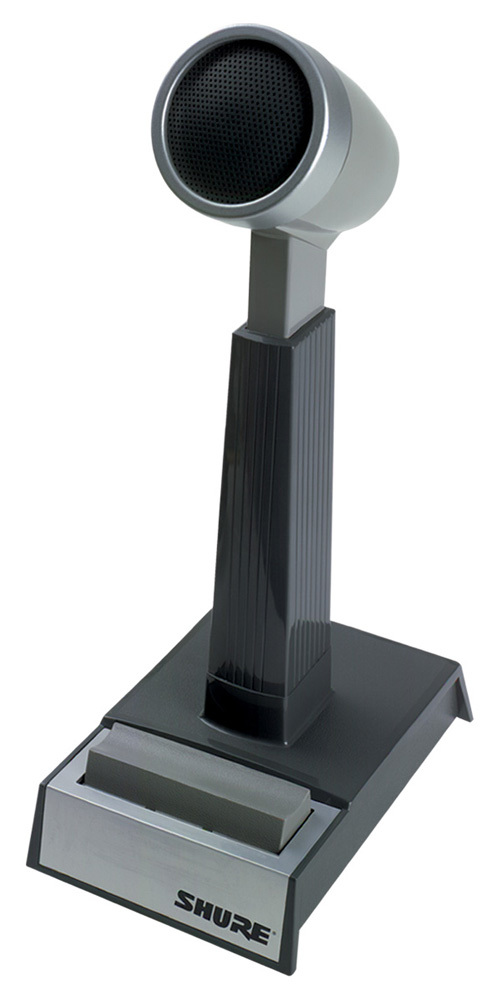Shure Model 450 Series IIUser Guide

PAGING AND DISPATCHING MICROPHONE
The Shure Model 450 Series II is a high output dynamic microphone designed for paging and dispatching applications. This extremely rugged microphone features an omnidirectional pickup pattern and a frequency response tailored for optimum speech intelligibility. It also includes an impedance selection switch and a locking press-to-talk switch.
Features
- Dual impedance
- Locking press-to-talk switch
- Rugged ARMO-DUR® base and case
- Adjustable height
PRESS-TO-TALK SWITCH OPERATION
To operate the control bar as a press-to-talk switch, simply hold it down and begin speaking. When you are finished speaking, release the control bar.
To lock the control bar in the “on” position, press it down and pull it forward. To unlock the control bar, push it back and release it.
IMPEDANCE SELECTION
To select high or low impedance, move the impedance selection switch, located under the microphone base, to either the HIGH or LO position. The switch is factory pre-set to LO.
Shure recommends the low impedance setting if long lengths of cable are used, or if severe hum is encountered. Use Shure A95 Line Matching Transformers to match a low impedance (300 Ω) microphone line to a high impedance amplifier input.
WIRING CONNECTIONS
Refer to Figure 1 and Table 1 below. For unbalanced operation, the GREEN wire is connected to the audio input, the WHITE wire is connected to the audio ground, and the SHIELD is connected to chassis ground. In some cases, audio ground and chassis ground will be the same.
For balanced operation, the GREEN wire is connected to the positive audio input, the WHITE wire is connected to the negative audio input, and the SHIELD is connected to chassis ground.
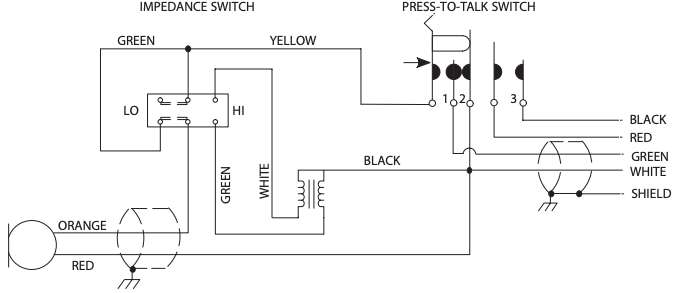
WIRING DIAGRAMFIGURE 1
Table 1. Typical Cable-to-Connector Wiring
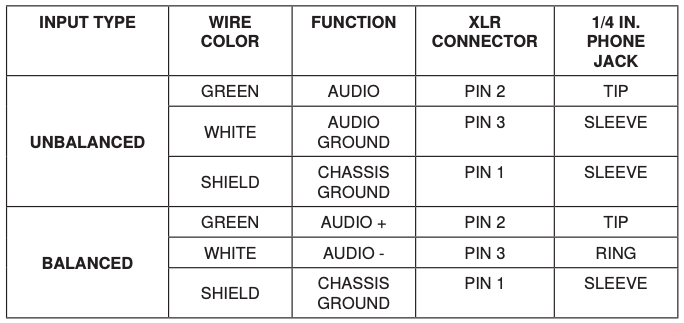
NOTE: The RED and BLACK leads are not part of the audio circuit. These wires provide a contact closure when the press-to-talk switch is depressed. This closure may be used to control an external relay or a transmit/receive circuit.
CHANGING PTT CIRCUIT TO NORMALLY OPEN
Using microphones in parallel requires a normally open microphone circuit. To modify the press-to-talk switch so that it provides a normally open circuit, proceed as follows:
- Remove the screws, washers, and bottom plate from the microphone.
- Unsolder the black, red, and white leads from the terminal of the press– to–talk switch (see Figure 1). Make sure these leads are still soldered together. If necessary, resolder them and insulate the connection.
- Replace the bottom plate and secure it with the screws and washers removed in Step 1.
SPECIFICATIONS
Type
Dynamic
Frequency Response
200 to 5,000 Hz (see Figure 2)
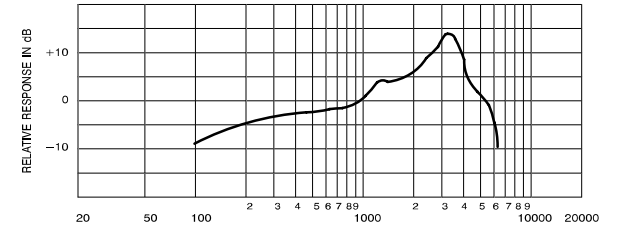
TYPICAL FREQUENCY RESPONSEFIGURE 2
Polar Pattern
Omnidirectional
Impedance (at 1,000 Hz)
High Impedance: 40,000 ΩLow Impedance: 210 Ω
Recommended Load Impedance
High Impedance: 100,000 ΩLow Impedance: 1,000 Ω
Output Level (at 1,000 Hz, Open Circuit Voltage)
High Impedance–35.0 dBV/Pa*(17.8 mV)
Low Impedance–57.0 dBV/Pa*(1.4 mV)
*1 Pa = 94 dB SPL
Switches
Locking Press-to-Talk Switch: Activates microphone circuit and an external relay or control circuit. The microphone circuit is normally shorted.
Impedance Selection Switch: Double-pole, double-throw slide switch located in the base of the microphone.
Cable
2.1 m (7 ft.) four-conductor, two conductors shielded, non-detachable
Case
Two-tone gray ARMO-DUR®
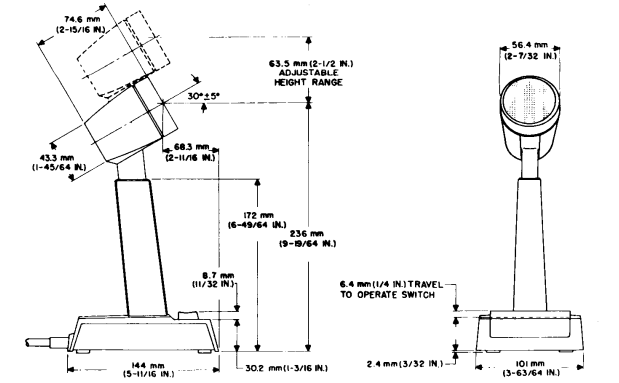
OVERALL DIMENSIONSFIGURE 3
Net Weight
737 grams (1 lb., 10 oz.)
Shipping Weight
1020 grams (2 lb., 4 oz.)
Certification
Conforms to European Union directives, eligible to bear CE marking; meets European Union EMC Immunity Requirements (EN 50082–1, 1992).
REPLACEMENT PARTS

Shure 450 Series II Paging and Dispatching Microphone User Manual – Shure 450 Series II Paging and Dispatching Microphone User Manual –
[xyz-ips snippet=”download-snippet”]

